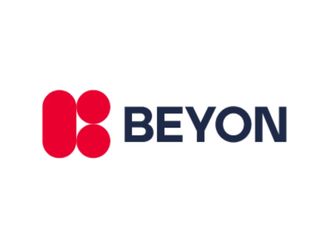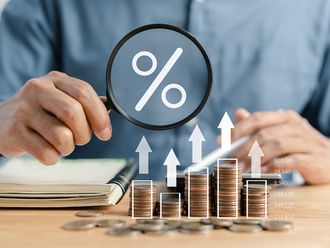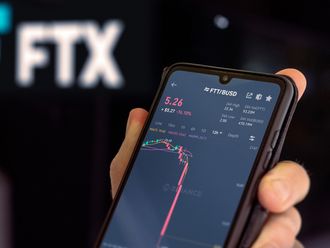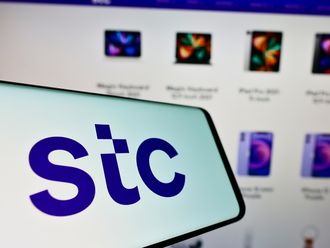Dubai: The Dubai Financial Market General Index (DFMGI) completed another week of strong performance, as it rallied again to a new high for the trend, closing at 5,302.09, up 223.72 or 4.41 per cent.
For the year the index has gained 57.34 per cent and it maintains a significant lead over other equity markets around the world. The next best performer is Argentina, up a little over 26 per cent for the year.
Last week, volume improved noticeably above the prior week when the DFMGI’s performance was flat, while market breadth was even, with both the number of advancing and declining issues at 16. This indicates that there are less issues driving the index higher.
Concern that the Dubai market is overheating seems to be spreading. This type of consistent relative out-performance as seen in the DFMGI is indicative of a speculative market, regardless of the economic and company fundamentals, which arguably don’t support such a rapid rise in stock prices. Often, such rapid appreciation leads to disappointment, particularly for those investors who buy further into the trend, thereby supporting still higher prices.
The risk to investors is that when a pullback comes, it could consist of a sharp rapid decline making it difficult to control risk and to keep losses to a minimum. This becomes more likely the longer the uptrend continues at a rapid rate. There’s an old Wall Street maxim that the bigger the bull the bigger the bear. In other words sustained rapid price appreciation on the way up can be followed by an equally fast drop once the market turns.
One of the more recent examples of this was seen in silver in 2011. The precious metal fell over 30 per cent in two weeks following an 89 per cent advance in 13 weeks.
Regardless, there is no sign yet of a slowdown that could lead to a pull back. As of last week it looks like the DFMGI has a good chance of at least reaching the 61.8 per cent Fibonacci retracement level of the very long-term downtrend that starts from the 2005 high. This mathematically calculated potential resistance level is at 5,774.95, 8.9 per cent above last week’s close.
As of now, signs of weakness that could lead to a pickup in downward pressure, won’t be seen until there is a drop below last week’s low of 5,078.37.
Abu Dhabi
Last week, the Abu Dhabi Securities Exchange General Index (ADI) crept lower, falling only 11.05 or 0.22 per cent to close at 5,047.39. Volume increased a bit over the prior week, while 28 stocks weakened against 19 gaining.
The degree of speculation that’s being witnessed in the DFMGI is not reflected in the performance of the ADI, which has gained 17.65 per cent in 2014 and is currently experiencing a correction. So far, it has fallen 4.1 per cent below the most recent peak of 5,239.38 reached three weeks ago. That’s not significant and it could end soon.
The next weekly support level is around 4,922.32, and a little bit higher is the 21-week exponential moving average (ema), now at 4,946.52. The 21ema, a trend indicator, has been tested as support a couple of times during corrections over the past eight months. Each time it was reached buyers soon stepped in to push the index higher. That could happen again.
Alternatively, a decisive drop below the weekly 21ema, and especially a daily close below it, is a more significant bearish sign. Even more so if the DFMGI starts to weaken around the same time. The weekly support of 4,922.32 can be used as a proxy for the 21ema in this case since the price levels are so close.
A daily close above last week’s high of 5,108.85 could lead to higher prices. The ADI would then need to contend with a resistance zone up to the most recent peak of 5,239.38. If it can close on a daily basis above that peak then the odds increase for a continuation of the uptrend.
Stocks to watch
Waha Capital gained 12.21 per cent last week to close at 3.40, a record high, making it the second best performer in the Abu Dhabi market. Volume confirmed the strength as it reached a four-week high and the fourth highest level in at least three years. The high for the week was 3.42, slightly exceeded the prior high of 3.37 from a month ago.
Technically an upside breakout may have begun but it needs confirmation with a more decisive upside move above the high of a month ago. The surge in volume may be a leading indicator for a potential price move that puts Waha Capital in one of the better positions technically for further upside in the coming weeks.
That all may start to change if the stock drops below last week’s low of 3.08. But the more important support level is the weekly low of 2.79 from two weeks ago, which ended a three-week pull back. A daily close below that low makes it much less likely that Waha will continue its uptrend in the near-term.
Bruce Powers, CMT, is a financial consultant, trader and educator based in Dubai, he can be reached at bruce@etf-portfolios.com












